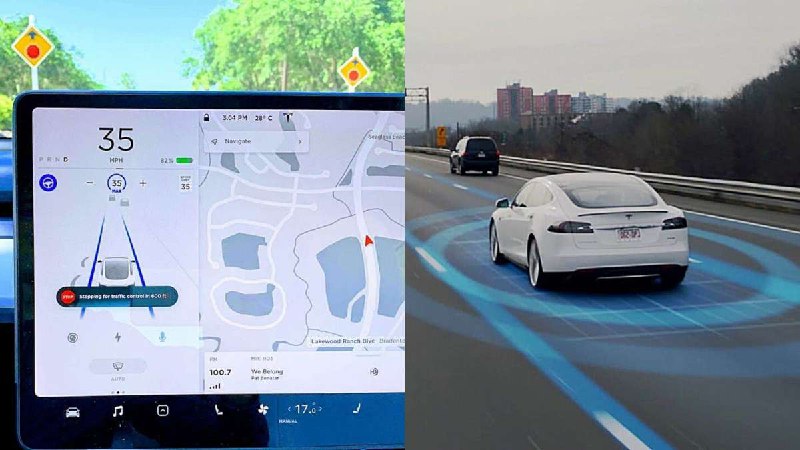Reader Response : "Autopilot and Full Self-Driving Capabilities" by Tesla Draft #2
The article "The six levels of vehicle autonomy" by Synopsys (n.d.), emphasizes the critical importance of implementing advanced autonomous systems in vehicles to ensure safe and efficient transportation.
The “Full Self-Driving Capability” (FSD) is an advanced autopilot driver-assistance incorporated with partial vehicle automation software that helps with road navigation and driverless parking (Tesla, n.d.). Scullion (2023) mentioned Tesla’s autopilot driving technology requires attention and supervision as FSD features do not make the vehicle fully autonomous. Tesla integrates Level 0 to 5 driving automation. Synopsys (n.d.) elaborates that all level 0 vehicles are manually controlled with the driver navigating through the road. Systems such as emergency braking do not qualify as automation. Level 1 features one automated system, specifically adaptive cruise control which assists in steering or accelerating while monitoring the safety distance of the car ahead. Level 2 semi driving automation controls both steering and acceleration/deceleration while the driver pays close attention to the road. Synopsys (n.d.) further elaborated that Level 3 consists of “environmental detection” functionalities with the ability to make decisions of acceleration/deceleration past a vehicle. Level 4 is considered high driving technology which can override the driver in the event of car system failure. Lastly, level 5 allows the car to drive independently through any “dynamic driving task” with minimal human attention. It is fully autonomous with “steering or acceleration/braking pedals” functionalities. Redding (2023) mentioned the subsequent upgrades introduced an "eight-camera array" and "enhanced computing power" for broader visibility and faster processing, aiming to extend "sensor coverage" and vehicle autonomy.
With insights into FSD capabilities (autonomy levels, radar sensors), it becomes clear that the automotive industry is working towards advanced autonomous systems fostering a safe and efficient self-driving ecosystem. However, they also represent software challenges that affects the safety which requires miles of real world data to understand the different ways accident happens.
Even though FSD capabilities have been enhanced, engineers are looking at improving the system's performance against hazards and accidents and reducing statistics due to human faults. As stated (Oikonomou et al., 2020), Google is developing different solutions and procedures with their hardware and software to improve better movement control and faster sensor features and software systems. In addition, there are distinct areas for refinement and improvement regarding real-time resource management and systemic status tracking, as well as including temporal considerations.
Autopilot system represents a significant leap forward in automotive safety and efficiency. Initially, Tesla vehicles were celebrated for their innovation and electric efficiency. However, it's the Autopilot's advanced driver-assistance features that have redefined what it means to drive safely. Following extensive research and development, Tesla identified that human error was a leading cause of vehicular accidents (Abbasi et al., 2023). The introduction of Autopilot aimed to mitigate these risks by providing semi-autonomous driving capabilities, such as adaptive cruise control, lane keeping assist, and self-parking.
Further investigations into driving data suggested that vehicles equipped with Autopilot engaged are less likely to be involved in an accident, highlighting the system's potential to enhance road safety significantly. Despite early skepticism, the continuous refinement of Autopilot through over-the-air software updates has improved its functionality and reliability, demonstrating Tesla's commitment to leveraging technology for safety (Abbasi et al., 2023). The company has also been transparent about the need for ongoing driver supervision, ensuring that users understand the technology's current limitations while benefiting from its protective features.
As Tesla continues to innovate, the Autopilot system is expected to evolve further, incorporating more autonomous features that promise to reduce the incidence of accidents further and improve the overall driving experience. This technological advancement not only showcases Tesla's pioneering approach to automobile safety but also sets a new standard for the industry, pushing towards a future where fully autonomous vehicles could become a common sight on our roads.
Reference:
Tesla (n.d.). Autopilot and Full Self-Driving Capability
https://www.tesla.com/support/autopilot
Murray Scullion (2023). Explained and Tested: Tesla’s self-driving Autopilot
https://www.carmagazine.co.uk/autonomous/tesla-self-driving/
Synopsys (n.d.). The 6 levels of vehicle autonomy Explained.
https://www.synopsys.com/automotive/autonomous-driving-levels.html
Tesla model and software features: CarShtuff.
https://www.carshtuff.com/post/which-tesla-autopilot
Abbasi, S.; Rahmani, A.M. Artificial Intelligence and Software Modeling Approaches in Autonomous Vehicles for Safety Management: A Systematic Review. Information 2023, 14, 555. https://doi.org/10.3390/info14100555
Oikonomou, M.G.; Orfanou, F.P.; Vlahogianni, E.I.; Yannis, G. Impacts of autonomous shuttle services on traffic, safety, and environment for future mobility scenarios. In Proceedings of the 2020 IEEE 23rd International Conference on Intelligent Transportation Systems (ITSC), Rhodes, Greece, 20–23 September 2020; pp. 1–6.

Comments
Post a Comment